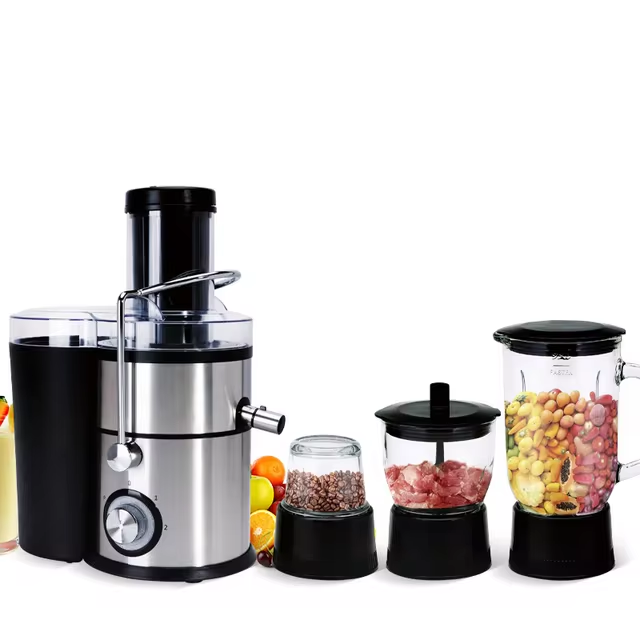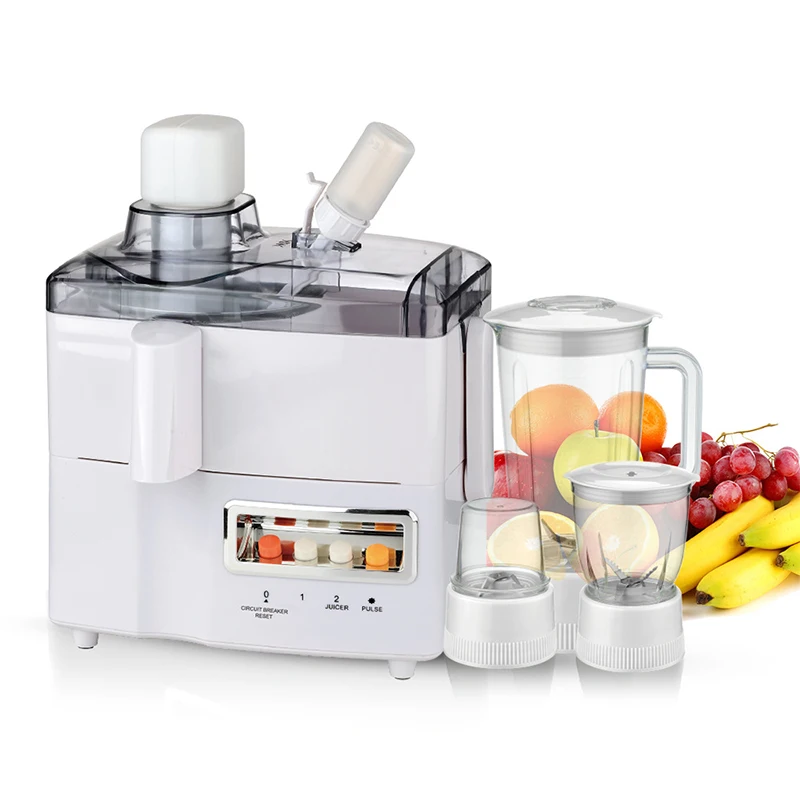
Introduction to Kitchen Appliances
Navigating the world of kitchen gadgets can be overwhelming. With a variety of tools at your disposal, understanding the essentials and how they can make your life easier is key. Two such indispensable appliances that often lead to confusion are food processors and blenders. Though they might seem similar at a glance, they serve distinct purposes in food preparation.

Food Processor and Blender Basics
A food processor is designed for tasks like chopping, slicing, and dicing. It’s the ultimate helper when you need consistent cuts or a quick dough mix. The device usually comes with multiple attachments, allowing you to shred, grate, or even knead with ease. It’s the go-to gadget for solid, diverse ingredients.
A blender, on the other hand, shines when dealing with liquids. Its main function is to puree and blend ingredients into smooth, drinkable concoctions. For anything that requires a silky texture, such as soups or smoothies, a blender is your best bet. Both appliances have strong motors and offer a range of speeds, but they’re optimized for different types of food prep.
Key Differences Between Food Processors and Blenders
Understanding the key differences between these two kitchen gadgets will help you make informed decisions.
Design and Structure
Food processors have a broad base and a large, spacious bowl. This design is suited for handling solid and bulky items. Blenders, however, sport a tall, narrow pitcher. This shape is perfect for creating a vortex that blends liquids well.
Primary Functions and Performance
A food processor is versatile, great for chopping, slicing, and even kneading dough. Blenders shine in making smoothies, soups, and purees. They make smooth textures with ease.
Food processors can mix and dice without liquid. Blenders often need some liquid to operate effectively. This is a key factor in performance.
Blades and Attachments Comparison
Blades in food processors are interchangeable. They can slice, dice, and more. Blenders usually have a fixed blade, designed mainly to puree. Food processors come with various attachments, enhancing their versatility. Blenders have fewer, if any, add-ons.
When to Use a Food Processor
Knowing when to use a food processor can simplify your kitchen tasks significantly. This appliance excels in tasks that require precision and power.
Ideal Food Processor Tasks
A food processor is perfect for various kitchen activities:
- Chopping Vegetables: Achieve uniform pieces quickly without the labor of hand chopping.
- Making Dough: Mix ingredients for bread, pizza bases, or pie crusts conveniently.
- Grinding Meats: Prepare ground meat for burgers or meatballs in minutes.
- Preparing Nut Butters: Process nuts into smooth, creamy spreads.
- Creating Dips and Spreads: Whip up hummus, salsa, or guacamole effortlessly.
These tasks showcase the food processor’s ability to handle solid, chunky ingredients better than blenders.
Food Processor Attachments and Uses
The versatility of food processors comes from their various attachments:
- S-Blade: Ideal for pureeing and mincing.
- Shredding Disc: Shreds cheese or vegetables quickly.
- Slicing Disc: Creates even slices of vegetables or fruits.
- Dough Blade: Specifically designed for kneading dough.
Each attachment enhances the food processor’s functionality, making it an indispensable tool for efficient meal preparation.
 When to Use a Blender
When to Use a Blender
Understanding when to opt for a blender over a food processor can simplify your kitchen routine. Blenders excel in tasks that involve liquids or require a smooth consistency. Here’s how and when you might decide to use a blender.
Ideal Blender Tasks
Blenders are perfect for several kitchen tasks:
- Making Smoothies: Combine fruits, vegetables, and liquids for a refreshing drink.
- Pureeing Soups: Create smooth, creamy soup textures effortlessly.
- Preparing Homemade Sauces: Blend ingredients for sauces such as marinara or hollandaise.
- Crafting Cocktails: Mix up ingredients for cocktails, crushing ice as needed.
- Making Milkshakes: Whip up thick, creamy milkshakes with ease.
These tasks benefit greatly from a blender’s ability to create fine textures and mix liquids efficiently.
Different Types of Blenders
Various models of blenders serve different purposes, maximizing efficiency based on your needs:
- Standard Countertop Blenders: Ideal for general use, from smoothies to soups.
- Immersion Blenders: Handy for blending directly in pots or bowls; perfect for soups.
- Personal Blenders: Compact and convenient for single-serving smoothies.
- High-Performance Blenders: Capable of handling tough tasks like grinding nuts or making dough.
Choosing the right type of blender can enhance your food preparation, ensuring smooth results for specific tasks like liquid recipes and fine purees.
Food Processor vs Blender: Usage Examples
Moving from theory to practice, let’s look at specific scenarios where you’d use a food processor or blender.
Specific Recipes for Each Appliance
For enticing concoctions best made in a food processor, think beyond liquids. Pesto or salsa, for example, achieve their chunky texture here. Pie dough and sliced veggies also turn out perfectly. Blenders excel with smooth creations. Smoothies, milkshakes, and soups are classic blender recipes. For a velvety sauce, reach for the blender.
Recipes that shine in a food processor include:
- Vegetable Chopping: Making quick work of carrots for a salad.
- Pesto: Combining basil, pine nuts, and olive oil for a rustic blend.
- Pie Dough: Creating flaky pie crusts with precise mixing.
- Shredded Cheese: Grating blocks of cheese for toppings or recipes.
Blender-ready recipes to consider:
- Fruit Smoothies: Blending berries and bananas for a silky drink.
- Creamy Soups: Pureeing pumpkin or tomato for a smooth soup.
- Hollandaise Sauce: Emulsifying butter and egg yolks for a smooth sauce.
- Frozen Cocktails: Crushing ice and mixing fruits for a chilly treat.
Mixing and Chopping Capabilities
Food processors can mix and chop without liquids, offering a dry and often chunkier result. These abilities make them ideal for more solid and less runny recipes. Blenders need a bit of liquid to perform best, suited to turn out perfectly pureed or blended outcomes. So, depending on your recipe’s texture requirement, pick the appliance that matches—the processor for dry, the blender for wet.
Choosing the Right Appliance for Your Kitchen
Choosing between a food processor and a blender can be tricky. Here are tips to help you decide.
Factors to Consider
When you’re picking between a food processor and a blender, think about these points:
- Your Cooking Habits: Do you make lots of smoothies or soups? A blender might be best. Prefer chopping and kneading? Go for a food processor.
- Kitchen Space: How much room do you have? Food processors can be bulkier. Consider where you’ll store your appliance.
- Budget: Determine how much you want to spend. Sometimes a food processor is pricier than a blender.
- What You Eat: If you enjoy liquid meals like shakes, invest in a blender. Love salads and dough-based foods? A food processor is ideal.
- Features and Attachments: Look at what each appliance offers. More attachments mean more versatility. Decide what’s crucial for your cooking.
Versatility in Cooking Tasks
Versatility is key in choosing between the two. A food processor is a multitasking hero. It chops, slices, kneads, and more. A blender excels when dealing with liquids. Find out which tasks you do more often.
- Food Processor: Great for solid foods and multipurpose tasks.
- Blender: Perfect for drinks and smooth textures. Some blenders, like high-performance models, also handle hard ingredients.
If you cook various dishes, consider owning both. This way, you’ll be ready for any recipe. But if you must choose one, think about what you cook most often and match the appliance to your cooking style.
Conclusion
Summarizing the Ideal Uses
When choosing between a food processor and a blender, consider your cooking needs. Food processors excel at tasks that need solid ingredient handling. This includes chopping vegetables, making dough, and grinding meat. They are perfect for any preparation that requires slicing or mixing without liquid. On the other hand, blenders are ideal for liquid recipes. Use them for smoothies, soups, and sauces that need a smooth consistency.
Blenders need some liquid to operate properly, whereas food processors do not. This makes a food processor versatile for both dry and wet ingredients but excellent with dry. Blenders, with their design, create perfect textures for drinking.
 Final Recommendations on Selection
Final Recommendations on Selection
Your decision should align with what you cook most often. If you regularly make smoothies or blend soups, a blender is a must-have. For those who enjoy preparing salads, pies, or need to chop lots of vegetables, a food processor will serve better. Consider the space in your kitchen, budget, and the versatility of each appliance.
If your cooking varies widely, owning both appliances might be the best choice. This allows you to handle any recipe with ease. If limited by budget or space, choose based on the appliance that matches your most common cooking tasks. Remember, the right appliance can save you time and enhance your cooking experience.